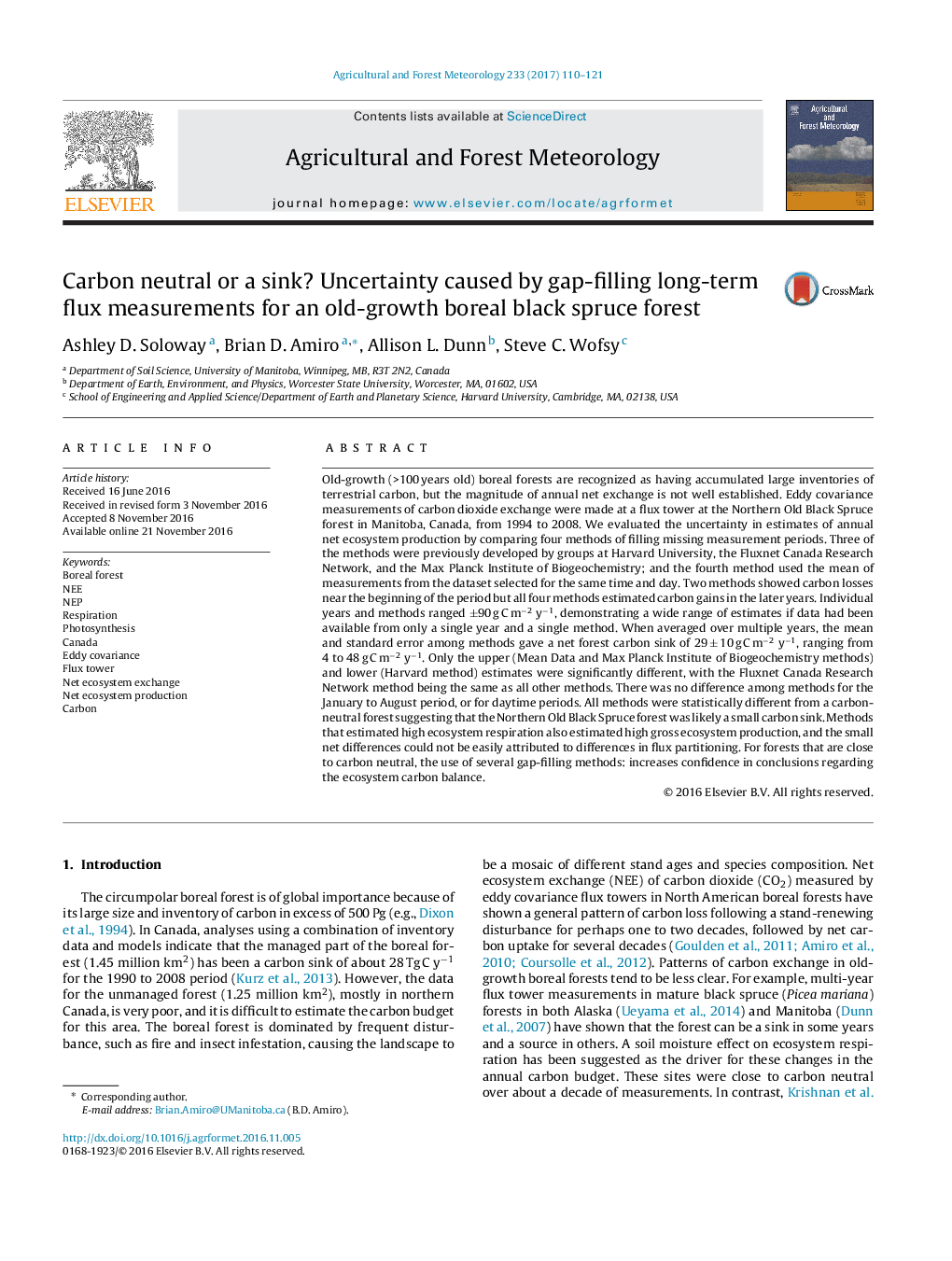| Article ID | Journal | Published Year | Pages | File Type |
|---|---|---|---|---|
| 4758956 | Agricultural and Forest Meteorology | 2017 | 12 Pages |
Abstract
Old-growth (>100 years old) boreal forests are recognized as having accumulated large inventories of terrestrial carbon, but the magnitude of annual net exchange is not well established. Eddy covariance measurements of carbon dioxide exchange were made at a flux tower at the Northern Old Black Spruce forest in Manitoba, Canada, from 1994 to 2008. We evaluated the uncertainty in estimates of annual net ecosystem production by comparing four methods of filling missing measurement periods. Three of the methods were previously developed by groups at Harvard University, the Fluxnet Canada Research Network, and the Max Planck Institute of Biogeochemistry; and the fourth method used the mean of measurements from the dataset selected for the same time and day. Two methods showed carbon losses near the beginning of the period but all four methods estimated carbon gains in the later years. Individual years and methods ranged ±90 g C mâ2 yâ1, demonstrating a wide range of estimates if data had been available from only a single year and a single method. When averaged over multiple years, the mean and standard error among methods gave a net forest carbon sink of 29 ± 10 g C mâ2 yâ1, ranging from 4 to 48 g C mâ2 yâ1. Only the upper (Mean Data and Max Planck Institute of Biogeochemistry methods) and lower (Harvard method) estimates were significantly different, with the Fluxnet Canada Research Network method being the same as all other methods. There was no difference among methods for the January to August period, or for daytime periods. All methods were statistically different from a carbon-neutral forest suggesting that the Northern Old Black Spruce forest was likely a small carbon sink. Methods that estimated high ecosystem respiration also estimated high gross ecosystem production, and the small net differences could not be easily attributed to differences in flux partitioning. For forests that are close to carbon neutral, the use of several gap-filling methods: increases confidence in conclusions regarding the ecosystem carbon balance.
Keywords
Related Topics
Physical Sciences and Engineering
Earth and Planetary Sciences
Atmospheric Science
Authors
Ashley D. Soloway, Brian D. Amiro, Allison L. Dunn, Steve C. Wofsy,
